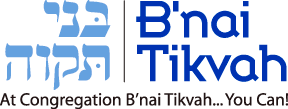There is something quite odd about Simchat Torah. It makes sense to celebrate reaching the end of the Torah, and starting once again “In the beginning…..” And we celebrate Simchat Torah as a full festival, like Passover and Succot. Nevertheless, it is never mentioned in the Torah. It isn’t mentioned in the Talmud, either. So where did it come from?
To understand this we first have to understand something about how we read the Torah. Back in the old days, in Israel, they didn’t read through the entire Torah in a year. They took three years to do it, reading only a couple of chapters every Shabbat. This was the original “triennial cycle.” In Babylonia, on the other hand, they read the entire Torah in a single year, dividing the chapters into the weekly parshiyot (Bereshit, Noach, Lech lecha…) we all recognize.
These two systems, triennial and annual, competed with each other for nearly a thousand years. Although the Babylonia Jewish community was stronger (because the Jewish community in Israel was oppressed and weakened by various external forces), the loyalty to Israel and its traditions still attracted many followers. During the Crusades, though, the Jewish community in Israel was simply decimated. The Babylonian one year cycle system became unquestionably dominant. So the need to celebrate the annual cycle now became universal and acute.
But when to do it? Here, the second day of holidays, as celebrated in “galut,” in the Diaspora, came to the rescue. The second day of Shemini Atzeret, coming at the end of Sukkot, was a holiday crying out for meaning. After all, Shemin Atzeret means “The Assembly on Day 8,” that is, the eighth day after Sukkot begins. Celebrating the eighth day on the ninth day doesn’t really make a whole lot of sense (even to us Jews, who have all sorts of wacky customs). But considering the time of year, right after Rosh Hashanah, it was the perfect time to celebrate the annual torah cycle. Simchat Torah was born, right there in galut.
And that leads to yet another oddity. Now that we have returned in large numbers to Israel, the “ninth day festival” (which is the second day of the Shemini Atzeret holiday) is no longer necessary. After all, in Israel, they only celebrate Shemini Atzeret for one day. But Simchat Torah has become so institutionalized that it could not be ignored. So all of the customs associated with Simchat Torah—dancing with the Torah scrolls, giving everyone an aliyah, etc—have been transferred to Shemini Atzeret. This is a liturgical odd couple if ever there was one. Simchat Torah is a time of great joy and revelry. Shemini Atzeret, on the other hand, is a day of solemnity, marked by the recitation of Yizkor, the prayer for rain (Geshem), and occasionally the Book of Ecclesiastes (hardly fun reading). Using a squirt gun to douse the Cantor during Geshem (which is recited in High Holy Day melodies to add to the spiritual drama), is not exactly fitting for Shemini Atzeret. But that’s the custom in Israel.
Weird. And here’s another oddity. Most Conservative congregations use a modified triennial reading cycle, which combines elements of both ancient patterns. We only complete the reading of the Torah every three years, like the ancient Israeli custom; but we divide the Torah into the (Babylonian) weekly parshiot.
Simple, it ain’t.
